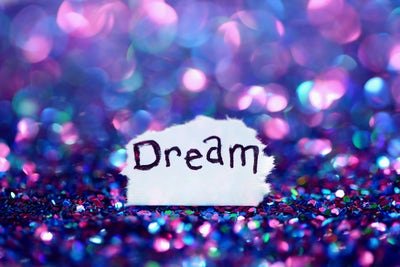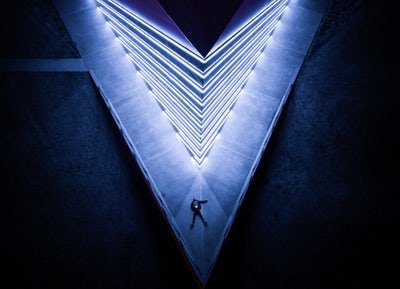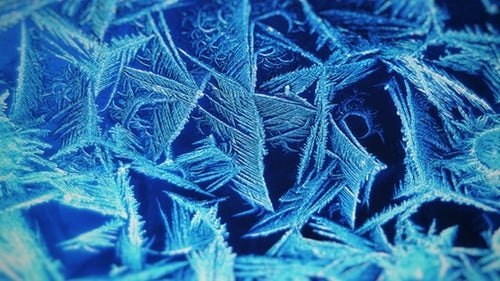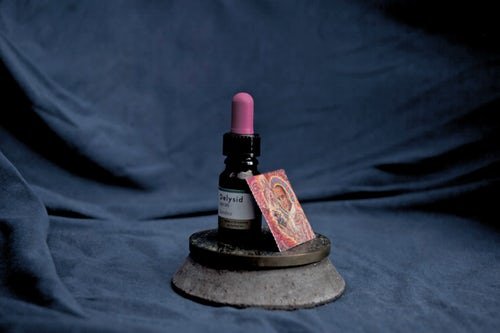Tripping Without Drugs: Colored Rain, the "Cosmic Game board," a "Meat Wheel," and Hypnagogic Hallucinations

Hypnagogic hallucinations are a pretty common phenomenon. As one falls asleep it is possible to experience dreamlike hallucinations before completely losing consciousness. They can be mundane or rather strange but they are always interesting and share some similarities to the effects of psychedelic drugs. I typically don't have a lot of faith in the efficacy of non-drug methods of reaching altered states of consciousness because they rarely deliver what they promise or if they do, they require a great deal of practice and work. However, I can speak with some experiences when I say that hypnagogic hallucinations and the other psychological changes that accompany them do actually approach the the magnitude of psychedelic experiences (though, they are very short lived). Further, this state of consciousness can be achieved with relative ease when it is compared to other drug-free methods of reaching a highly altered mindsets. With that being the case, I thought that it might be nice to describe a few of my experiences with hypnagogic hallucinations, provide some of my thoughts on the subject, and explain how one (or at least I) can achieve this strange state of mind.

Hypnagogic hallucinations differ from dreams because they occur before sleep takes hold. Depending on who one asks, they naturally manifest in 1/4 to 1/3 of the population and are largely considered to be harmless. Interestingly, when one seeks information about hypnagogic hallucinations, they are usually presented as though they are a "medical condition" that may "require" treatment. However, given the vast swath of the population that the phenomenon effects (and I suspect that most people are actually capable of having the hallucinations), it may be better to view it as a normal part of sleep that some individuals are more prone to noticing than others. The causes of these hallucinations are not well understood but they are no more dangerous than dreams. The experience can be rather intriguing for one who is interested in exploring the hidden parts of the mind and its abundance of safety can make seeking it out quite attractive.
I have had naturally occurring hypnagogic hallucinations sporadically throughout my life but I discovered that I could consciously induce them by accident. I spent some time trying to meditate and I was never very good at it. My mind likes to wonder and if I allow myself to become too relaxed, I fall asleep. I was aware of those issues at the time and I made efforts to remain awake during my meditation sessions (there was little that I could to do about my lack of focus but that was fortuitous, in this case). Essentially, I would fight the urge to slip into unconsciousness by focusing on my wandering mind. I would allow myself to become lost in a daydream but I remained actively engaged with it to prevent the onset of sleep. When I was able to do that, I could successfully hover someplace between wakefulness and sleep and that is where weird, extremely creative, and often nonsensical, thoughts would pop into my head and intricately detailed visual hallucinations would manifest behind my eyelids.
These hallucinations are quite distinct when compared to dreams and are far more psychedelic in their character. Psychedelics are often much more abstract than dreams and feel less grounded in the world that the psychonaut inhabits. That is to say, that while dreams are typically set in recognizable environments (a building, a road, a forest, or what have you), psychedelic hallucinations are often completely incompatible with reality (which makes them particularly difficult to describe) and are only grounded by the limits of a user's mind. Hypnagogic hallucinations seem to fall somewhere in between what one would expect to experience during those two altered states but they favor the abstract and intangible characteristics of psychedelic visions, in my opinion.

I have had hypnagogic hallucinations more times than I can remember and some of them really stick out in my mind. On one occasion, I saw some alien environment. I could say that it looked like a street corner but only if it existed in another universe with a completely different set of laws of physics. Before I could really take in the sight, however, it began to rain deeply red and blue droplets of something that looked like thick animated paint. Unfortunately, I became somewhat excited by the vivid nature of what I was seeing and that brought me too far back toward consciousness and ended the vision. Most recently, I saw what I am calling the "cosmic game board" (because I have no better way to describe it). The board looked like a blue grid, floating in the void, with a number of squares outlined on it. Each square had strange, indecipherable, writing on it and they occasionally flipped around and expressed a new untranslated symbol. However, the most memorable of my hypnagogic hallucinations is what I call the "meat wheel." It is difficult to describe but it was pink and fleshy in its apparent texture. The wheel hovered in what looked like the interior of a room that was made of a similar fleshy material and had circular openings on its walls. The object was (as its name implies) wheel shaped and had fleshy spokes extruding from its edge but they curled to the right flaccidly instead of jutting out as a spoke should. On the flat surface of the wheel, I observed a ring of multicolored jewels. It rotated slowly for some time but I was unable control my desire to examine the hallucination and that pulled me back to wakefulness.

There is also a profound shift in one's thought process that occurs when he or she lingers on the boundary between consciousness and unconsciousness and it can be quite beneficial for a person who wishes to increase his or her creativity. When I reach the desired state of mind, just above sleep, I find that strange thoughts pop into my head. Sometimes, they are random phrases that have no context but also seem to carry a meaning. On other occasions, they are related to the daydream that I used to reach that state of mind. They may provide some new perspective from which to view an issue or a problem or they may be complete nonsense that is little more than a collection of words or mental images. They are always novel, though. The weird thought process always seems to generate ideas that would not be born into existence under normal circumstances. That novelty and blend of meaningful insight and utter absurdity is reminiscent of (though, distinct from) the changes that occur in the mind of a user of psychedelic substances and, like psychedelic effects, it is a goldmine for one who seeks increased creative inspiration.
These little "trips" can be quite meaningful for the same reasons that psychedelic trips can be meaningful. The method that a person uses to alter his or her consciousness matters less than one might think. Psychedelic drugs are the most consistently effective method of reaching meaningfully altered states of mind but they are not the only path to new modes of thought about the self and the world that it inhabits. The important thing is that one's consciousness is altered in some way or another because it is the fact that a change occurs which allows for the growth of new understanding. When it comes to reaching productively shifted mindsets without the use of drugs, inducing hypnagogic hallucinations has, in my experience, been the most effective method by far and that should make it somewhat attractive for both seasoned psychonauts and people who are either unable or unwilling to consume a psychedelic drug.

If you would like to try to induce hypnagogic hallucinations in yourself, you should know that while it is pretty easy, there are a few things to watch out for and a handful of helpful tricks. You should either be willing to accidentally fall asleep or set an alarm so that you do not miss something that you needed to be awake for. The biggest "danger" is that you may end up taking a nap when you did not intend to take one but that is not a real problem as long an you are careful about when you choose to do this (right before an important meeting is not a good idea, for example). The concept is simple enough but the implementation can take a little bit of practice. Your goal is to get as close to being asleep as possible without actually being asleep. As I mentioned, I find that getting lost in a particular train of thought helps to keep me occupied enough to not fall asleep. Using music can also be helpful because it gives you something with which to tether yourself to the conscious world. Choosing a well lit room may also help to prevent you from completely slipping into unconsciousness. In the beginning, you will often find that you are either too awake or too asleep to achieve the proper state of mind where you are likely to have hypnagogic hallucinations but, with a little time, you will find that it is easier to control your level of wakefulness. Eventually, you will be able to sit on that boundary where your mind starts to do weird things to you and you may experience some strange trip-like effects as a result. If you give it a try and it works or if you have had hypnagogic hallucinations before, let me know because I would like to hear some other perspectives on this subject.
Peace.
All the images in this post are sourced from the free image website, unsplash.com.